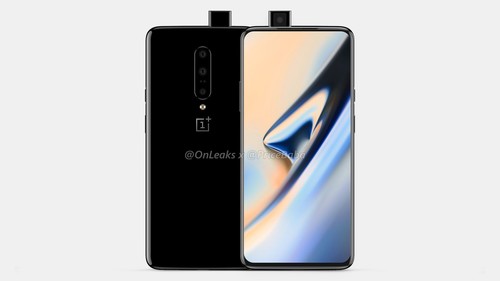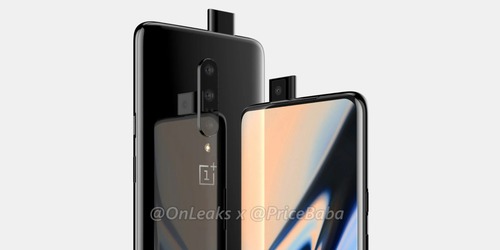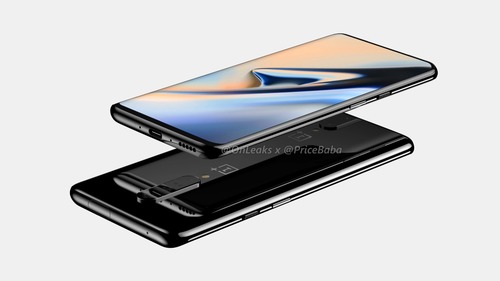The company has been delivering high-specs and great build quality worthy of flagships past. The best thing about them is that they avoid the flagship prices. They usually sell flagship-level devices at half the price of the more popular brands. They do this by eliminating all the unnecessary additions to smartphones such as an IP rating.
However, their most recent release, the OnePlus 7 Pro, closes in a little bit on this important price gap. The entry-level OnePlus 7 Pro is now priced at around $669 while the top-of-the-line version comes in at $750. Compared to entry-level flagships like the Galaxy S10e and the iPhone XR, the price difference has become somewhat negligible.
So, should you get the entry-level flagships from more recognizable makers like Apple or Samsung instead of this relatively unknown brand?
If you look at what the phone has to offer, you might be shocked by your own assessment. It has an entry-level flagship price tag, but it punches way above its class. True to the company tagline, “Never Settle”, the OnePlus 7 Pro would probably give higher-end flagships such as the iPhone XS Max and the Galaxy S10+ a run for their money because it does not settle as an underfeatured entry-level device. The $750 model can even perform just as well, at least in benchmarks, as the $1,200 iPhone XS Max.
A Worthy Rival to Samsung’s Screen Technology
The most pertinent aspect of the OnePlus 7 Pro is the screen. Right off the bat, you’d recognize that it’s the aspect of the phone that underwent the most drastic of changes. It now sports Galaxy-like curved edges unlike the flat-screened OnePlus phones of the past. It's a little polarizing as some people may feel like it doesn't embody the ethos of just the basics done right that the company has become almost synonymous with.
But, the 6.67-inch screen has more to it than the curved edges. The panel itself has a more functional and significant improvement - It’s the first 90Hz AMOLED screen on a smartphone. While it doesn’t sound like it would amount to much, using this high-refresh rate screen would make it difficult to come back to other screens including Samsung’s industry-leading displays. It’s simply a more fluid display that makes content consumption a lot more engrossing.
It’s important to note that 90Hz isn’t exactly the maximum achieved refresh rate in the industry right now. The Xiaomi Black Shark 2 gaming phone, for example, has a 240Hz panel that’s probably the better fit for extremely competitive gaming. The downside of that, however, is that it’s not AMOLED. Therefore, the image quality suffers a bit. With the OnePlus 7 Pro, screen performance and quality meet perfectly in the middle to make an excellent daily driver.
Another important screen feature is notch-less design. But it does so by sacrificing a few things. For one thing, they’ve inserted the front-facing camera inside the body. It pops-up on top of the device when you need it and retracts when you don’t. This puts into question the phone’s durability as doing it introduces more moving parts. Furthermore, this selfie-cam implementation essentially makes face-unlock, which OnePlus has become known to implement well, something of an afterthought. That millisecond wait time for the selfie-cam to pop up is a bit too long to be considered convenient. Considering that the benefit you get from this is the awesome full-screen 90Hz edge-to-edge display, these trade-offs might just be worth it.
Flagship Killer Through and Through
The base model of the OnePlus 7 Pro comes equipped with 6GB of RAM. In a world where the flagship Google Pixel 3 has just 4GB of RAM, the OnePlus flagship is a multitasking beast.
Storage-wise, it’s also a cut above the other phones in its price range. It comes with 128GB at the base model and goes all the way up to 256GB.
Both RAM and storage are worthy of the pro moniker. Even the heaviest users are going to have a difficult time trying to slow this phone down.
To top it all off, the Snapdragon 855 should be able to power even the most intense apps and games that Google Play Store has to offer. All of these are, once again, true to the spirit of never settling.
Great but Not Class-Leading Camera
Camera technology has become a huge selling point for smartphones these days. The OnePlus 7 Pro performs well here too.
It has all the features of the latest phones such as Nightscape, Portrait, and HDR photos. The triple rear camera set-up makes this possible. It has a 16-megapixel wide-angle shooter, a 48-megapixel main sensor, and an 8-megapixel telephoto lens.
It doesn’t produce quality shots like the Google Pixel 3, but it can’t be lumped with the mid-range handsets with just decent cameras that litter the market either.
There is hope that it would become even better though. Enthusiasts had been porting Google Pixel cameras to OnePlus handsets of the past and there’s no indication that they’re going to stop doing that any time soon. Once that camera port comes out, it should perform up to par with the best of them. For now, it’s underperforming when compared to the likes of the current generation Galaxy S phones, Pixels, and iPhones.
User Experience is Still at the Forefront
As it always has been, the user experience is at the top of the priority list for the developers of this OnePlus flagship. Oxygen OS is as quick as ever. It’s even gotten more customizable features now.
It has, for example, Zen Mode. It takes Android Pie’s Digital Wellbeing to a whole new level. Activating this feature will lock you out of your phone for a full 20 minutes leaving you with just call, text, and camera functions. This essentially keeps you from using the most addictive apps helping you wean your screen on time.
Oxygen OS basically remains true to its near-stock Android form which makes it a lot less taxing to the entire system. This further helps to keep the device quick and responsive.
OnePlus went out on a limb on this one. It’s the first phone that they had priced in the flagship category and whether fans of the brand are going to bite the bullet and buy this one is still up in the air. But what’s for certain is that it’s basically almost everything that phones are trying to achieve these days – a full-screen device that's powerful enough to run any app. This kind of high-end premium flagship performance coupled with a price that’s not going to break the bank seems like it’s going to work. All we have to do now is wait and see if people will be willing to see past the brand and see the excellent smartphone that it is.



